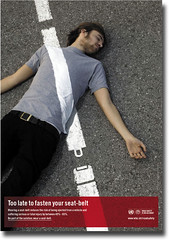There are tips from Irish Advanced Motorists (IAM) on how to save fuel. Worth reading.
Ask yourself: "Do I really need to drive?": Short journeys that are generally less than two miles cause the most pollution and are inefficient in terms of fuel consumption. A straining cold engine will produce 60 per cent more pollution than a warm one. Walk or cycle where possible instead.
Plan your route: Take the most direct route and go at off-peak times if possible to save fuel and time. Sitting in congestion means you are often doing zero miles per litre. Consider car sharing, Park and Ride schemes or public transport (if available)
Have your vehicle serviced regularly: Inefficient, under-serviced engines can reduce fuel economy by 10 per cent or more. Catalytic converters are environmentally friendly - but only if they are properly maintained.
Check your tyres: Correct tyre pressures reduce wear and helps fuel economy. Under-inflated tyres need replacing more often (itself an environmental problem) as well as being dangerous. Make a point of checking them at least once a week.
Obey the speed limits: Try to ‘feather’ the throttle when you reach your cruising speed. Doing 70 km/h uses 25 per cent less fuel than 110km/h and a smoother driving style can bring significant fuel saving.
Reduce the drag factor: Remove roof racks and carriers when they’re not in use as well as unnecessary boot luggage and heavy accessories. Driving with the window open and using air conditioning increases drag and lowers fuel economy, so use the vent settings instead.
Buy green fuel: And use less of it. If you get stuck in traffic, switch off the engine. Find out if you can buy low sulphur diesel (city diesel) or cleaner petrol (low sulphur/aromatics) locally.
Use “accelerator” sense: Save fuel by planning ahead and reading the traffic in advance to gently join a queue rather than braking suddenly as you hit traffic.
Reverse when you park: The engine will be cold and at its most fuel inefficient when you start it. If you can drive away without having to reverse when the engine is cold, you will save fuel and have better visibility.
Watch your levels: If you fill your fuel tank up to the brim, you may be carrying around additional fuel which in turn means that you have more weight on board than is necessary and this will itself reduce fuel efficiency.
July 19, 2008
Driving Green with IAM
Labels: environment




